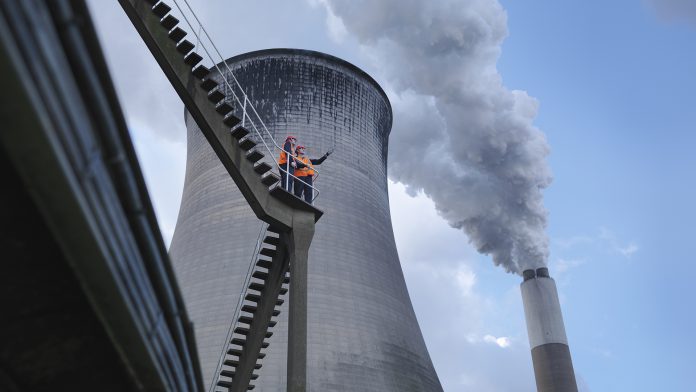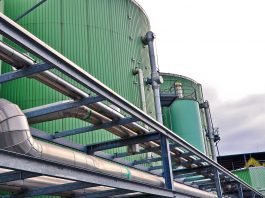Lara Heberle, Global Technology Development Manager for CCUS at Pall Corporation, discusses how filtration technology is key to optimising bioenergy production and reaching global decarbonisation strategies.
As governments worldwide devise new plans to reduce carbon emissions, strategies to combine different technologies that advance environmental sustainability are likely to increase. The UK Government’s recent biomass strategy recognises that aligning bioenergy production with carbon capture and storage (BECCS) is a key piece of the net zero puzzle.
BECCS involves burning biomass (any material of biological origin) to generate energy or convert it into fuels while capturing and permanently storing the carbon dioxide released in the process.
Although it is not currently operating at scale in the UK, the government’s strategy recognises that increasing its deployment is crucial to achieving ambitions for the UK’s power system to be fully decarbonised by 2035.
Bioenergy production is also regarded as particularly important when balancing out residual emissions (emissions that remain after all efforts to eliminate them have been implemented) in heavy industries, such as aviation and trucking.
As well as the UK government, a range of independent institutions, including the Climate Change Committee (CCC), the International Energy Agency (IEA) and the Intergovernmental Panel on Climate Change (IPCC), acknowledge BECCS as a pivotal tool in tackling climate change. Despite this, the IEA has forecast that global carbon removal via BECCS will reach just under 50 Mt of carbon dioxide a year by 2030 – falling short of the 190 Mt CO2/year needed to be removed under its Net Zero Emissions by 2050 (NZE) Scenario.
This is mainly due to the current technology readiness level of BECCS pathways and the level of targeted investment. Many BECCS plants are still at the demonstration stage, although large-scale commercial installations will come online within the next few years. Similarly, investment in the technology is growing, with multiple projects selected for funding between 2021 and the present day.
Aligning bioenergy production with carbon capture and storage
With a likely surge in the development of BECCS facilities, it is more important than ever to be aware of the challenges of capturing, processing, and storing carbon. As well as the high costs involved, getting a permit for underground sequestration can be lengthy – up to six years. Such a long-term horizon may not be attractive to investors, and it is, therefore, essential that regulators begin to explore approaches to speed up permitting processes.
The need to align bioenergy production sites with CCS sites or create new infrastructure also poses a challenge. Biomass power plants require a lot of land for efficient bioenergy production. Furthermore, many biomass plant locations are not geologically suitable for carbon storage. This means that significant infrastructure works such as pipelines are required to transport captured carbon from industrial sites to storage facilities.
This can create a catch-22 scenario with companies hesitant to build and operate pipelines until potential customers exist. In contrast, customers may be reluctant to explore carbon capture and storage if they cannot get their emissions from their site to a storage facility.
Purification to optimise processing
Removing impurities from carbon dioxide captured from biomass power plants poses another challenge. Contamination from power plants can impact carbon capture equipment energy use, lifetime, and capture efficiency. However, if impurities can be prevented or minimised, future BECCS projects will benefit from enhanced productivity and longevity.
Currently, two million tonnes of carbon dioxide are captured from biogenic sources globally, with around 90% captured in bioethanol facilities (bioethanol is primarily used as an eco-friendly petrol substitute for road vehicles). This is mainly due to the high concentration of carbon dioxide in the gas stream at bioethanol facilities, which makes it easier and cheaper to capture.
However, removing carbon dioxide from bioenergy power plants is a more complex process. Flue gas streams from BECCS plants contain a lower concentration of carbon dioxide; the gas streams also contain other contaminants, including sulphur dioxide, nitrogen oxide, oxygen, and water. These impurities can cause operational issues, reduced carbon capture efficiency, critical equipment damage, unscheduled downtime, and increased maintenance costs.

The compression and storage of carbon dioxide is also a key part of the CCS process, with CO2 needing to be compressed to reduce its volume for efficient transportation and processing.
As compressors are highly sensitive to contaminants, which can quickly cause corrosion and lower compressor yields, supporting them with the right technology is vital. High-efficiency liquid/gas coalescers, for example, can be used to boost compressor operation and reliability by removing carry-over liquids (oil that seeps past the separator filter into the discharge piping), free water present in small aerosols (condensation and/or seal protection) and particulate matter (a mixture of solid and liquid droplets).
Suppose the carbon dioxide is not purified to target specifications when being transported for storage in geological reservoirs. In that case, it can cause pipelines to be corroded and even blocked in extreme cases and can foul reservoirs or damage injection pumps. Proactive contaminant removal can, therefore, provide a good return on investment.
Absorptive carbon capture
As bioenergy production projects using carbon capture continue accelerating, filtration and separation technology will play a critical role across the carbon capture and storage value chain. This particularly applies to absorptive (solvent-based) carbon capture, which is currently the most commonly used CCS method. This is primarily because it is more economical and at a more mature stage of development than other methods, such as cryogenics and chemical looping.
High-efficiency, absolute-rated particulate removal filters can protect solvents and prevent a build-up of solid contaminants, reduce foaming, lower aerosol emissions, and limit equipment fouling such as absorber internals and heat exchangers.
Collaboration will pave the way forward
BECCS is a vital part of the global energy transition as the only carbon dioxide removal technique that can provide energy. While sustainable bioenergy production will play an important role in helping governments achieve their BECCS strategies, improving CCS infrastructure and technology will also be crucial.
Greater investment in CCS technology is required to support the expansion of BECCS, with filtration and separation applications playing a key role in maintaining high carbon capture efficiency and reliable equipment operation, as well as meeting safety regulations.
With so many moving parts, collaboration between biomass producers, tech suppliers, industry and governments will be essential in scaling up the use of BECCS in a sustainable and economically viable way.









